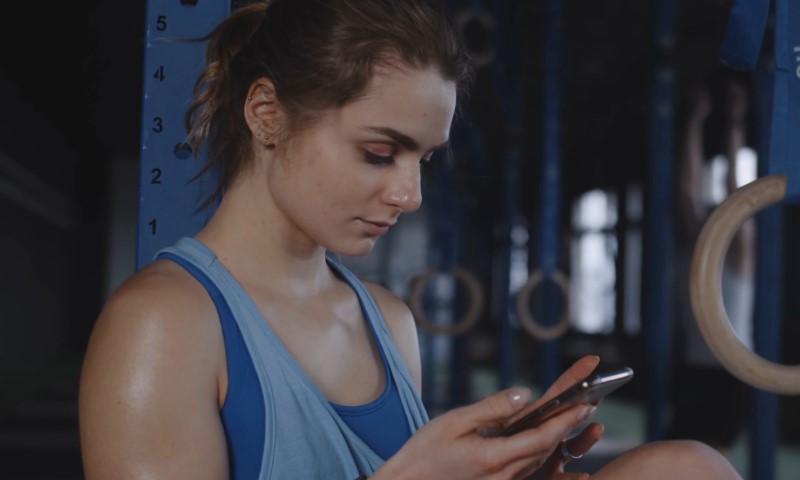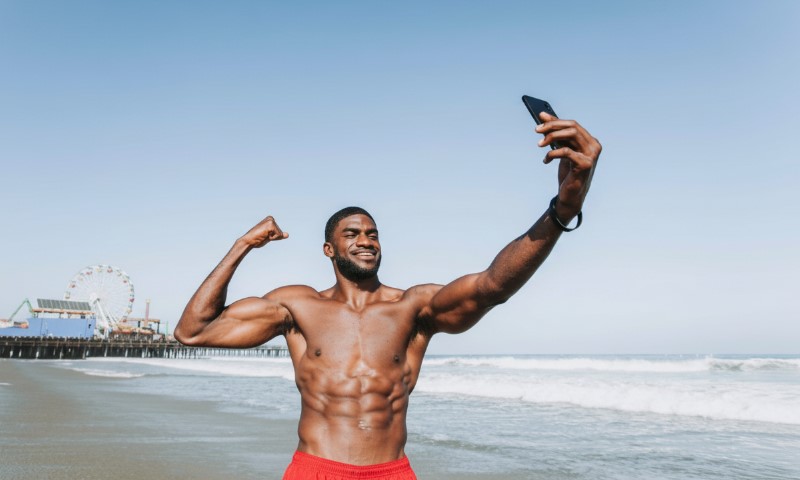Carrying a phone while running has become essential for many reasons. It provides a sense of security, allowing runners to call for help if needed.
It also aids in navigation, tracks performance, and provides entertainment through music or podcasts.
However, keeping a phone secure and accessible while running can be a challenge. Issues like bouncing, discomfort, and potential damage require careful consideration.
Various carrying methods offer solutions, but the right choice depends on comfort, security, and personal preferences.
Choosing the Right Carrying Method
Finding the best way to carry a phone while running requires a balance of security, comfort, and accessibility.
The right method depends on personal preference, running distance, and weather conditions.
Some options provide a snug fit with minimal movement, while others offer quick access at the cost of stability.
Below are different ways to keep a phone secure while on the move, along with the benefits and potential drawbacks of each.
Running Belts
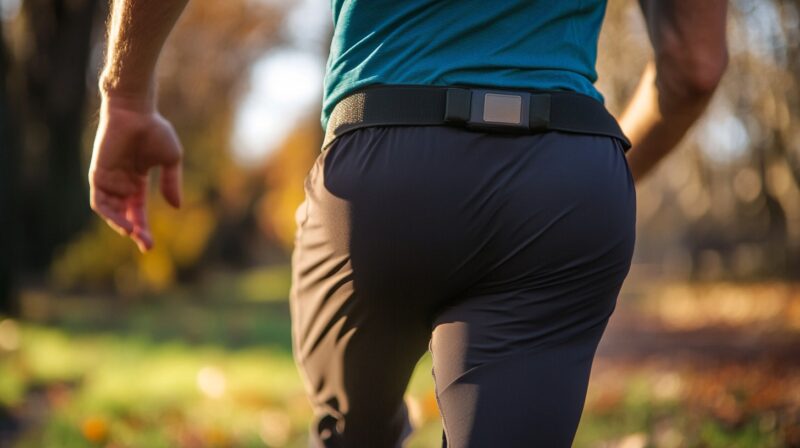
Running belts are among the most secure ways to carry a phone during a run.
Designed to wrap around the waist, they provide a snug fit, reducing bounce and discomfort. Many belts also offer storage for essentials such as keys, ID cards, and small energy snacks.
- Keeps the phone secure with minimal movement
- Hands-free and comfortable for most runners
- Extra storage space for small personal items
- Some models include water-resistant materials
Popular options:
What to consider:
- Fit: The belt should stay in place without restricting movement.
- Pockets: A zippered or stretch pocket ensures the phone remains secure.
- Water resistance: Helps protect against sweat or unexpected rain.
- Accessibility: Some designs offer quick access compartments for convenience.
For those who run in varying conditions, moisture-wicking materials and an adjustable fit enhance comfort. Testing a belt during shorter runs helps ensure it meets personal needs before using it for long distances.
Running Shorts/Leggings with Pockets

Built-in pockets in running shorts or leggings provide a hassle-free way to carry a phone without additional accessories. This option keeps movement unrestricted while reducing bulk.
- No need for extra gear
- Keeps the phone close to the body for stability
- Reduces bounce compared to external carrying methods
Best pocket placements:
- Side thigh pockets – Ideal for compression shorts and leggings, ensuring the phone stays in place.
- Back zippered pockets – A discreet option that reduces bounce and protects valuables.
Recommended brands:
- Oiselle Pocket Jogger
- Lululemon Speed Up Shorts
- Athleta Ultimate Stash
What to consider:
- Pocket depth: Should be deep enough to keep the phone stable.
- Fabric elasticity: Ensures the pocket stays snug without stretching out.
- Breathability: Lightweight materials help prevent overheating in warm conditions.
Testing different styles on short runs can help determine the best fit before committing to them for longer sessions.
Sports Bras with Phone Pockets (For Women)
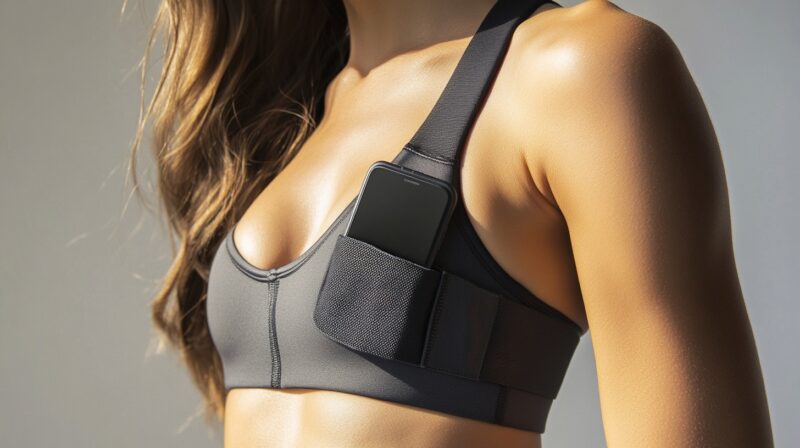
Sports bras with built-in phone pockets offer a hands-free solution that distributes weight evenly, reducing discomfort. These designs ensure a secure fit while eliminating the need for external storage.
- Hands-free and well-balanced placement
- Keeps the phone stable with minimal bounce
- Eliminates the need for extra gear
Pocket placement options:
- Back pockets – Keeps the phone secure and protected, but less accessible.
- Front pockets – Easier to reach but may cause more movement.
Recommended brands:
- Senita Sarah Sports Bra
- Tracksmith Alston Bra
What to consider:
- Fit: Should provide enough compression to keep the phone in place.
- Material: Moisture-wicking fabric helps keep both the phone and runner dry.
- Accessibility: A front pocket allows for quicker access, while a back pocket ensures a more secure fit.
Testing different designs can help determine which pocket placement works best based on individual needs.

Armbands provide a lightweight way to keep a phone accessible during a run. Worn around the arm, they allow quick access without stopping.
- Keeps the phone within reach
- Lightweight compared to belts and vests
- Ideal for runners who frequently check their phone
Potential drawbacks:
- Can cause chafing, especially on longer runs
- May restrict arm movement
- Accessing the screen while running can be difficult
What to look for in an armband:
- Adjustability – A secure fit prevents sliding or excessive movement.
- Water resistance – Protects against sweat and light rain.
- Screen protection – Some models allow touchscreen use without removing the phone.
While armbands work well for shorter distances, they may not be ideal for long runs due to potential discomfort.
Hand-Held Options (Not Recommended but Possible)
Holding a phone while running is generally discouraged due to the risk of dropping it, along with the additional effort required to maintain grip.
- Immediate access to the phone
- No need for additional accessories
- Increased risk of dropping the phone
- Can affect running form
- Requires a firm grip, which can cause fatigue
Ways to improve security:
- Ring grips or hand straps – Help maintain a secure hold.
- Protective case – Adds an extra layer of protection against drops.
Despite being an option, holding a phone during a run introduces unnecessary risks. If used, precautions should be taken to minimize distractions.
Hydration Packs and Running Vests
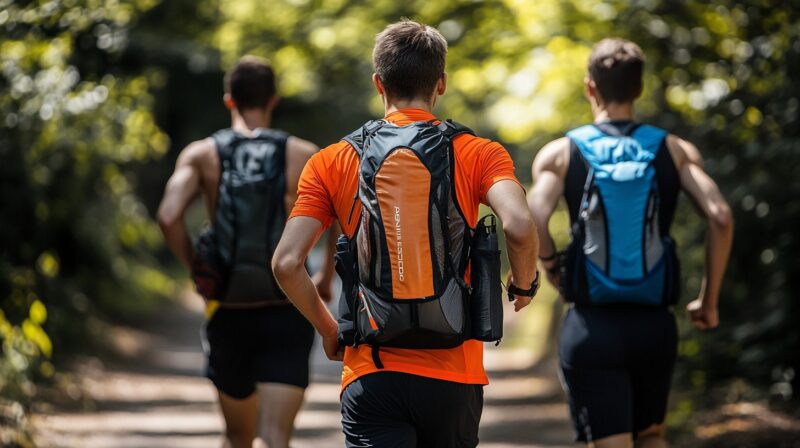
Hydration packs and running vests offer a practical solution for long-distance runners who need additional storage.
These options allow runners to carry water, snacks, and other essentials while keeping weight evenly distributed.
- Long-distance running
- Trail running
- Runners who need extra storage
Benefits:
- Provides hydration without requiring handheld bottles
- Secure compartments for phones and other essentials
- Even weight distribution reduces discomfort
Recommended brands:
- Nathan Quickstart
- Salomon Active Skin
What to consider:
- Fit: Should be snug to prevent excessive movement.
- Storage compartments: Look for zippered pockets designed for phones.
- Material: Breathable fabrics help prevent overheating.
While bulkier than other options, hydration packs provide the best solution for runners who need storage for extended distances.
Safety Considerations
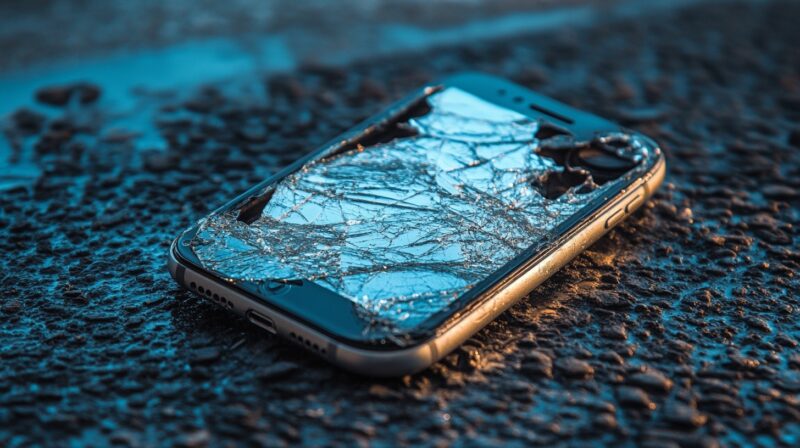
Now let us check out some safety considerations worth paying attention to.
Protecting Your Phone from Damage
Phones are susceptible to damage during runs due to impact, sweat, and weather conditions. A durable, drop-proof case such as those by Otterbox or Lifeproof offers protection against accidental falls.
Moisture can be another concern, especially for those who sweat heavily or run in humid conditions.
Using a waterproof pouch prevents damage caused by rain or sweat exposure. Keeping the phone away from direct body heat also helps prevent overheating.
Preventing Theft and Loss
Securing a phone during a run helps prevent theft or accidental loss. Choosing a pocket with a zipper or a hidden storage option reduces the risk of dropping the phone.
Loose pockets or unsecured belts increase the chances of the phone slipping out. A snug fit prevents excessive movement and ensures the device remains in place.
Those running in crowded areas should remain aware of their surroundings and avoid frequently pulling their phone out, as this can attract unwanted attention.
Accessibility vs. Security
The need for quick access should be balanced with keeping the phone secure. Some runners prefer armbands or front pockets for easy use, while others prioritize deeper storage for safety.
Those who check their phones frequently may opt for methods that allow quick retrieval. However, the risk of dropping the phone should be considered. Testing different placements helps determine what works best for personal comfort and convenience.
The Bottom Line
Selecting the right way to carry a phone while running depends on personal needs and running conditions.
Security, comfort, and accessibility should be carefully weighed to find the best option.
Testing different methods ensures the ideal fit while prioritizing safety keeps both the runner and phone protected.
Related Posts:
- 25 Simple Running Motivation Tips To Get You Moving
- How Can You Start a Career as a Running Coach?
- Lower Back Pain While Running? Here's What You Need to Know
- How Far Is a Half Marathon? Everything You Need to Know
- How Long Does It Take to Train for a Half Marathon?
- 6 Best Running Playlists Music for Every Pace and Mood




